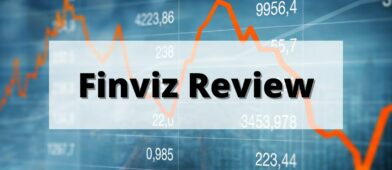So you’ve found “the one”. I’m not talking about your partner; instead, I’m talking about a house. People often say that buying a house is just as intense and emotional as getting married.
You’re spending a lot of money and making a commitment that will hopefully last for years to come. When you fall in love with a house, how can you make an offer on that house that will get you from “bidder” to “homeowner”?
When making an offer on a house your real estate agent will help guide you through the process. Be sure to get preapproved for a mortgage, understand the contingencies of your offer – such as that you’ll need to get an inspection, and don’t lowball the seller.
Whether you’re buying your forever home, your starter home, or an investment property, knowing how to make an offer that will get accepted is important. Here are some tips for making an attractive offer when you want to buy a house.
Table of Contents
Determine How Much House You Can Afford
This is the single hardest thing to do in the home purchase process – exactly how much house can you afford?
In our rising interest rate environment, that value will change as you go about your search. You can rely on a common rule of thumb “spend less than 30% of your salary on housing” or any number of other rules of thumb.
You can consider special circumstances, like dipping into your 401(k) to buy a house, to adjust that figure but it’s a decision you’re going to have to make.
Don’t buy too much house!
Get A Good Real Estate Agent
Unless you’re an experienced realtor in your own right, having a good real estate agent is a must before you make an offer on a house. As with any profession, there are good realtors out there and there are unscrupulous and unknowledgeable realtors out there.
You’ll want to find a realtor that, above all, has integrity. Second, you’ll want to choose a realtor that knows the business or is willing to find out what they don’t know.
This leads me to a side note: Don’t necessarily count out realtors who are newer in the business. Newer realtors can often be even more valuable because of their hunger to get the deal done and to know and do the right thing.
No realtor has all of the answer when it comes to buying and selling homes. Your job is to find a realtor who is willing to find out the answers to the questions they can’t answer themselves.
Most real estate companies have a cohesive team of realtors that are happy to help newer agents along the way. If you’re considering working with a newer realtor, just be sure that realtor admits they don’t know it all and is committed to finding answers and doing their best on your behalf.
My point: Experienced agents are great, but new realtors can be just as great.
Ask For Recommendations
Where do you find this fantastic realtor to help you with your home buying needs? Start by asking for recommendations. Ask trusted family members and friends that you trust who they’d recommend you work with. Ask who they’ve used in the past and how they liked the service they were given.
Conduct Interviews
Once you’ve got two or three recommendations, conduct private interviews. Sit down with each agent and ask them about the home buying process and how they manage it for clients.
Ask about their personal real estate philosophy and how they work with their clients. Be sure they communicate in a way that works for you and that you get along with their personality type.
Some real estate agents are all business. Others seem like old friends. Get to know each agent during the interview process and get a feel for which one you feel more comfortable with.
Check Reviews
Lastly, feel free to check online reviews. Although I wouldn’t count out an agent who doesn’t have any reviews or has few reviews (some simply don’t ask clients for reviews), I would take heed if you find an agent has several negative reviews.
People tend to be more vocal about a negative experience. While one or two negative reviews don’t necessarily mean anything, several negative reviews may indicate a realtor who isn’t acting in the best interests of clients.
At the end of the day after you’ve conducted your interviews and done your research, you should have a good idea of which realtor you want to work with.
Here are the differences between Redfin and a full-service agent.
Get Your Pre-Approval Letter
As you’re searching for your agent and before you start shopping, it’s important to get pre-approved with a reputable mortgage lender. Sellers who are considering offers for their home sale are more attracted to buyers who are already pre-approved for a mortgage.
If you’re working with a reputable lender, you should be able to get pre-approved for your mortgage within a day or so if your financial situation is in order. That way you’re ready to go when you find a home you want to make an offer on.
Finding a Good Mortgage Company
Finding a good mortgage company before you begin is an important step as well. As you do for real estate agents, you can ask friends and family members for recommendations for mortgage loan offices.
Or if you’ve already chosen an agent, you ask the agent who they recommend you work with. Many real estate agents have a list of mortgage loan officers they work with because they know the loan officer will take good care of the buyer.
Work Through the Details
Once you’ve chosen your agent and gotten pre-approved by a mortgage lender, you’ll want to work through the details of the offer. Here are some of the offer details you’ll need to discuss with your real estate agent.
Price
What will your offer price be? Will you offer the asking price? Or will you offer a little lower? A good real estate agent will be able to guide you through this decision process.
Although they won’t and shouldn’t make that decision for you, they can make suggestions and show you what similar homes in the area are selling for. In addition, your agent can give you guidance as to how to decide on an offer price you feel comfortable with.
Offer price ranges will vary based on the market, the area the home is selling in, and other factors. We’ll talk more about that in a bit.
Contingencies
With every home offer, you have the option to include contingencies. Along with the price, contingencies are additional criteria that pertain to your offer. Some contingencies you may want or need to include are:
- A contingency to have the home inspected
- Contingencies to repair or replace particular items
- Mortgage financing contingencies
- Contingencies that apply to the seller contributing to buyer closing costs
- Contingencies based on the sale of the buyer’s house (if you have a house to sell)
And other contingencies. Again, a good agent will be able to help you work through which contingencies you want and need to include with your offer.
Closing Date
You’ll also have to choose a closing date to put on your purchase agreement. Most mortgage companies will want you to choose a closing date that’s at least 30 days out from the date of your purchase agreement.
Your title company (they ensure the home’s previous and current title registration is in good standing) will want to have a good three to four weeks to get their research done as well.
Again, your agent can help you to choose the right closing date.
Earnest Money
Whenever you make an offer on the house, the offer will need to include a check from you for earnest money. Earnest money is money that is held in escrow by the real estate firm that listed the house for sale.
In essence, earnest money is a financial promise you are giving as to your commitment to purchase the home. This earnest money you put down will go toward your down payment at the time of closing.
If for some reason your offer gets accepted and then falls through, the earnest money is refunded to you in most (but not all) cases.
Thinking about a home warranty? Here are our favorites.
Add Extra Touches
When you’re considering the offer you want to make on the home, be sure to add extra touches to make your offer more attractive. This step is especially important when you’re involved in a multiple offer situation where you’re not the only one submitting an offer on the home you love.
Write A Love Letter
While a love letter written insincerely can be a turn-off, the right love letter can make or break the deal. I’ve had seller clients that have chosen an offer because of the love letter that was included with the offer.
I’ve also had buyer clients that have gotten a home because of the love letter they wrote.
Your love letter tells the seller what it is that you love so much about their home. Love letters often include a bit about the potential buyer as well. Here’s an example of an excerpt from a love letter written by a potential buyer:
Dear Mr. and Mrs. Smith
Thank you so much for considering our offer on your beautiful home. When we walked in the door, we knew right away this is the place for us. We love the open living space and the gorgeous kitchen. The bay window overlooking the lake is breathtaking.
The back yard is perfect for our children to play in. And the home is just six blocks from my parents. This is important to us as it makes it easier to spend more time with our family, with whom we are very close.
We hope you will consider selling us your home. We can see that you’ve put a lot of love into it, and we would continue to do the same if our offer is chosen.
Sincerely,
Matt and Anna Johnson
As I mentioned earlier, home buying and selling is a very emotional process. If you can tug at your seller’s heartstrings by sharing what you love about their home, you may gain some extra points when making an offer. Just be sure your love letter is sincere.
Be Polite, Flexible, And Accommodating Where You Can
Another key to making a successful offer on a house is to be polite, flexible, and accommodating where you can. This doesn’t mean you sacrifice your needs in favor of the seller’s needs, instead, look for a compromise when possible.
For instance, if you have a flexible closing date, have your agent call the seller’s agent and ask when they prefer to close.
Or, give the sellers a few hours after closing before you take possession of the home so they have a bit of extra time to get their belongings out of the home.
Politeness goes a long way as well. I can’t tell you how many deals I’ve closed for buyers where the listing agent and/or the seller will remark about how smoothly everything went throughout the buying process.
This isn’t happening because there are no glitches along the way. It’s happening because I work with my clients to approach the glitches in a positive manner. My buyers and I address the issue and then get on our “can do” hats to resolve the glitch in a timely manner and with a good attitude.
And that positive attitude can go a long way in making sellers happy and more accommodating when it comes to working with you, the buyer.
Next, I’ll quickly share some common mistakes that happen when people make an offer on a house.
Avoid These 3 Mistakes When It Comes To Making An Offer On A House
As a real estate agent, I’ve had offers get rejected and buyers get upset when their offer is rejected. Often, these buyers make some of the common mistakes that can happen when making an offer on a home.
1. Don’t Lowball
I cannot stress this enough. I’ve had clients who have lost all negotiating power with a seller because their first offer was a lowball offer. By lowball, I mean offers tens of thousands of dollars below the asking price.
Although there are some houses that are vastly overpriced, most are not. Making a lowball offer to a seller isn’t good business; it’s insulting and tends to make sellers angry.
2. Know the Market for the Area
Some agents will tell you to always try to negotiate the price or have the seller pay for some closing costs. That’s good advice, but it can hurt you if you’re offering on a home in a seller’s market in a popular area.
I’ve seen homes go for as much as $40,000 over asking price in a popular area that’s also a seller’s market. So before you make your offer, be sure your agent knows the type of market and area they’re dealing with, and make a deal you’re comfortable with based on that market and area.
3. See the Forest for the Trees
Sometimes buyers get so hung up on little details that they fail to see the big picture and lose out on a house they love. For instance, I sold a house recently where the buyer offered $40,000 lower than asking price.
A lower price was justified in this instance; the house had been on the market for nearly two years with no offers. When the buyers made their offer, the seller came back with a counteroffer of $25,000 less than asking price.
He made it very clear that this was his bottom line and that he wouldn’t go any lower. When the buyers asked me what I thought about them making another counteroffer back asking the seller to pay for an additional $2,000 in closing costs, I asked them one question:
“The seller made it quite clear that his counteroffer was his ‘bottom line’. Is it worth you losing this home over $2,000 should another counteroffer make the seller angry?”
The buyers decided it wasn’t worth $2,000 for them to lose the home because they really did love the home and the seller’s counteroffer was a fair price. So they took the counteroffer as it was submitted.
Moral of the story: Don’t get so caught up in the small negotiating details that you lose out on a house you love. Look at the big picture as you’re negotiating the small details.
Summary
Making an offer on a house can be overwhelming. The right agent will go a long way towards guiding you through the process. If you’ve found someone you trust listen to their advice, let the sellers know you love the house, don’t lowball, and be flexible when you can.



